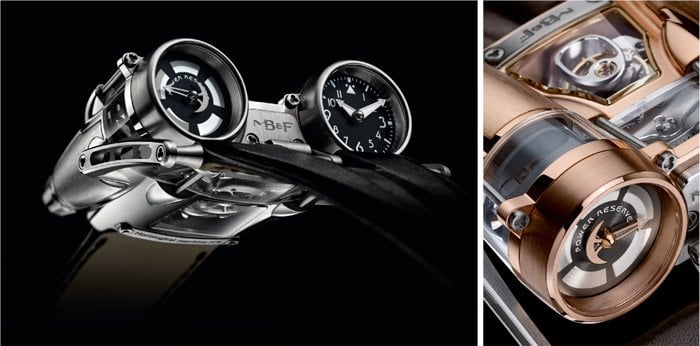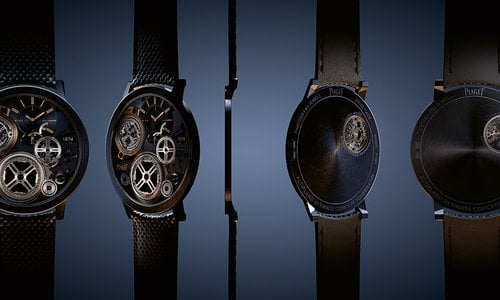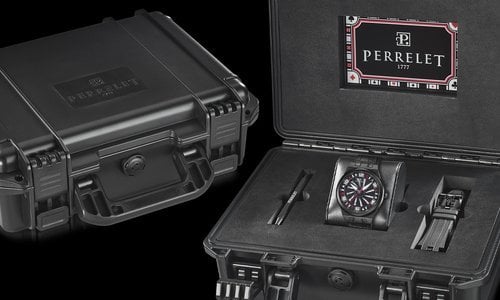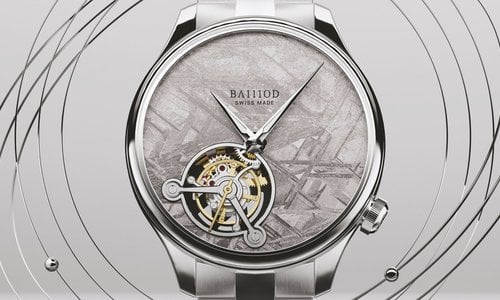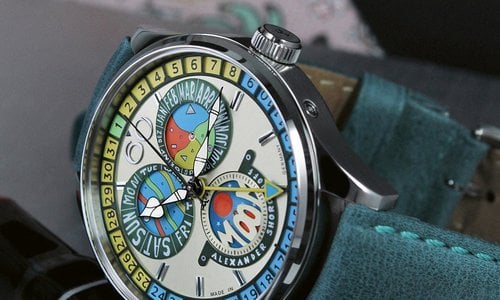Reminiscences of a BaselWorld that left me somewhat bemused, a little frustrated and, for some inexplicable reason, dissatisfied. Naturally, there were many highly notable exceptions!
Before I’m defrocked, declared a heretic and drummed out of the ‘BaselWorld Fan Club’ for including seemingly critical terminology in my sub-heading to this article, let me avow to being an unequivocal aficionado of this incomparable watch-fest.
From the editorial point of view, some vintages are better than others, but as many a BaselWorld devotee claims, there’s no such thing as a bad show, it’s just that some are better than others. So it is with a slightly heavy heart that I say, for me 2012 was one of those others.
Let me explain why. Many years ago, a very good friend of mine who also happened to be a world-renowned jewellery designer said to me that however clever, innovative, daring and unconventional a piece of jewellery is, if it’s unwearable it’s a failure because the objective of jewellery is that it is made to be worn and to enhance the wearer’s appearance. Today, I am applying that concept to wristwatches.
Monsters
As I wandered around the halls searching for my utopian timekeeper, it was impossible to ignore the preponderance of massive monsters and machines that purported to be the ideal, if not perfect watch that, in addition to surviving the rigorous corrosive tests of ‘The Big Blue’ or the pressure of a James Cameron 35,576 feet dive, could also be worn at a black tie event.
I suddenly realised that some of today’s most brilliant watchmakers, along with many who don’t fit into that category, seem to have lost sight of a watch’s function: to show the time at a glance. When I want to know the time, I do not want to have to put my wrist into various contortions to be able to decipher it from a multitude of dials, perpetually rotating mechanisms, oscillating wheels and a multitude of hands. I want to be able to simply look at my wrist and confirm at a glance that the rumbling in my stomach is because it is twelve-thirty and it’s lunchtime.
I fully accept that I may never again be allowed to stroll amongst the heady creations in the Palace, but answer me this: who do you know, other than the designers and watchmakers of these monstrous machines, that actually wears one on a daily basis?
Let’s take an example, the HM4 Thunderbolt RT by MB&F. It looks as though once it’s strapped onto your wrist you could zoom off to Krypton faster than Superman himself, pick up a few pieces of kryptonite to be used as dials in more mundane timepieces, rid the world of all its evil dictators and lunatics and be back home for tea before anyone notices you’ve even left the office. The Thunderbolt may well be a mechanical marvel and maintain the MB&F brand name at the forefront of horological modernism, but to put it another way, how many pieces will be purchased versus, let’s say, the new Omega Speedmaster?
|
Another case in point is Harry Winston’s Histoire de Tourbillon 3 (which was featured in our previous issue). A feat of technical prowess that combines a bi-axial double tourbillon with an outer cage that has a two-minute rotation and an inner cage that rotates in 40 seconds; a second single axis tourbillon that rotates in 36 seconds with the time being displayed on rotating discs. Avant-garde design yes, but take a careful look at the watch and consider whether or not you would actually wear this 65 x 45.9 mm machine as a timekeeper. Given that this monster is in 18-carat white gold it will probably take someone of Schwarzenegger’s proportions to even lift it. Additionally, I can’t help but ask myself what do these 120-second and 40-second tourbillons accomplish? If you are going to wear a watch on your wrist on a regular basis, there’s no need for a tourbillon since the effect of gravity is no longer a consideration. And as much as I love to see a tourbillon in full flow, a watch with two tourbillons is not only doubly redundant, but also a perfect example of overkill. One thing is for sure, by the time you’ve let your eyes meander over the entirety of its surface, checked whether or not the 50-hour power reserve indicator needs a boost and admired the complexities of the rotating tourbillons, not only will your retinas have a problem decrypting the time on the rotating discs, but also you’ll more than likely have a parking ticket stuck under your Ferrari’s windscreen wipers because the parking meter will have long ago clicked on to the red ‘Penalty’ indicator! But then if you can afford the Histoire de Tourbillon 3 and the Ferrari, I suppose the fine would be insignificant.
Since time immemorial monsters roam the earth in groups of three, so to complete my triumvirate let’s look at the H1 by HYT. But before I do, I want to state loud and clear that I have a lot of time for Vincent Perriard, the brand’s CEO and Partner, and I really appreciated him taking time out to explain to me the H1’s intricacies and functions.
Now to business. The H1 is what I would call a ‘fun’ monster, a timepiece that seems to operate a little like a pacemaker, with a pair of pumps resembling bellows at 6 o’clock that pump a yellow luminescent liquid through a tube that encircles the watch to indicate the hour. The small seconds counter is situated between 9 and 10 o’clock and is reminiscent of a miniaturised waterwheel you might find at an ancient flour mill or on the sides of one of the paddle steamers that chug up and down the Mississippi river.
If you turn the watch over, the transparent caseback reveals an insight into the working heart of the H1. The timepiece is supremely innovative and it is a brilliant example of how visual creativity is as much a part of modern watchmaking as the mechanical prowess required to construct it. However, for me it is a mechanical monster. I love it, but I wouldn’t wear one in a month of Sundays. (See Pierre Maillard’s article in this issue for more technical details on the H1 and HYT’s plans for the future).
These timepieces are but three examples of many of what I mean by watchmakers going off on a tangent: they display in an extraordinary manner the time but forget about the basic concept of a wristwatch. A watch by definition is a small portable timepiece usually worn on the wrist. Okay, how small is small? Don’t get me wrong, all three of these timepieces are exceptional creations that demonstrate inspired mechanical expertise and workmanship, but for me their complexity detracts from what I believe are the two fundamental aims of a wristwatch: an instant visual reading of the time and, given that the male of the species often considers his wristwatch as his only adornment, the enhancement of his appearance. I’m fully aware that by saying that I won’t win many friends, but for me a mechanical or quartz wristwatch is an intricate mechanism worn on the wrist whose raison d’être is primordially to give the time and not look like a machine from a Nobel prize winner’s laboratory. (Continued... Part 2)
Source: Europa Star June - July 2012 Magazine Issue

